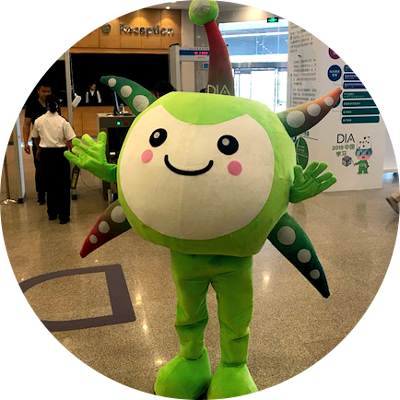Proceedings: DIA China 2018

Innovative Breakthroughs in Oncology Therapy
Current State of Immunotherapies in China
George Liu,
Theme Co-Lead,
Head of Early Development and Scientific Operations,
Harbour Biomed
hile there are already many treatment methods for cancer, advances in basic research have resulted in significant improvements in these treatments, and there are tremendous efforts underway to find novel therapies that can offer even better cancer treatment.
Most recently, immunotherapy as a tumor treatment has come to the scientific forefront because of significant success using immune checkpoint inhibitors and chimeric antigen receptor modified T (CAR-T) cells. The Innovative Breakthrough in Therapy Theme of the 10th DIA China Annual Meeting presented the latest breakthroughs in innovative clinical development in the field of oncology.
Why it matters: With increasing incidence and mortality, cancer has become a major public health problem in China. However, the effectiveness of available treatments is far from satisfactory.
Key Takeaways
- Immunotherapy is one of the most successful treatments for solid tumors. The recent success of immunotherapy, especially anti-PD-1/PD-L1 treatment, is a major step in progressing to better cancer care. Combination therapy has also been widely and successfully used in cancer immunotherapy treatments in recent years.
- Oncology is at the frontline of precision medicines, but still faces many difficulties; one of these difficulties is the lack of predictive biomarkers for treatment response, especially biomarkers based on the unique characteristics of Chinese populations.
- After the 2017 US FDA approval of CTL019, the first CAR-T (chimeric antigen receptor-modified T cells) treatment, CAR-T therapies are developing very rapidly in China. Chinese research scientists have tried a variety of ways to increase the number of T lymphocytes that recognize specific tumors to improve the clinical efficacy of these therapies.
- Recent approval of new therapeutic products such as bispecific antibody, antibody-drug conjugates (ADCs), and Oncovirus, have increased interest in these new approaches. However, each approach presents its own set of difficulties.
Current State of Immunotherapy in China
The success of immunotherapy, especially anti-PD-1/PD-L1 treatment, has led to important strides in cancer care in recent years. Immunotherapy has become a hot area in cancer research and treatment in China.
Multiple tumor types have demonstrated long-lasting response to immunotherapy. However, the overall response rate to this treatment is only around 20%. Therefore, better biomarkers are needed to guide patient selection and provide early indicators of treatment response. Because of the dynamic nature of the human immune system and the multiple elements involved in the complex immune response, it is very challenging to develop biomarkers for immunotherapy. New technologies like next generation sequencing (NGS) and ctNDA liquid biopsies can be effective ways to promote innovative, biomarker-driven clinical research.
Several hundred clinical trials are currently exploring the effects of anti-PD1/PD-L1 used in combination with experimental immune modulators, such as other monoclonal antibody checkpoint inhibitors, in China. Preliminary evidence has highlighted the potential to enhance the clinical benefits of monotherapy by combining them with agents that have synergic mechanisms of actions. Despite the promise of combination therapies, China has seen little research into the rationale, dosages, treatment schedules, and configurations of the specific combination used.
Thanks to government support, CAR-T therapies are developing rapidly in China. However, preparation of CAR-T cells is complicated and greatly affected by variation among patients. New domestic enterprises have arisen to develop automated and standardized CAR-T preparation platforms to alleviate this problem.

